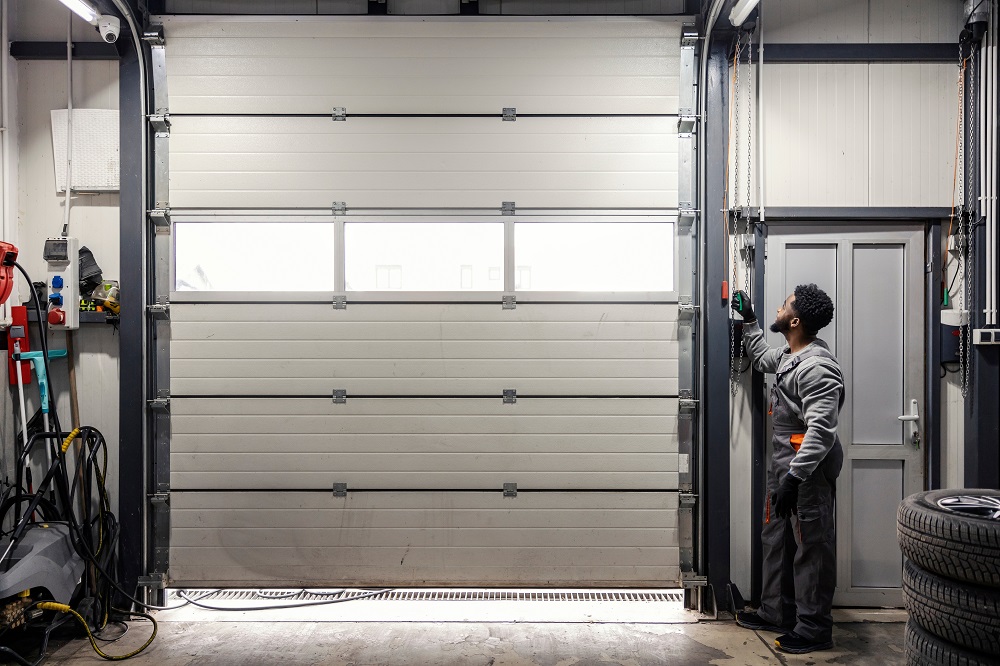Commercial garage door openers are the workhorses behind busy warehouses, loading docks, auto shops, and storefronts. When they’re healthy, your doors move safely and efficiently. When they’re not, you risk downtime, accidents, and escalating costs. If you’re seeing recurring issues, it may be time to replace rather than repair. Here are seven clear signs your commercial garage door openers are due for an upgrade—and how to decide what to do next.
1) Frequent breakdowns and rising repair bills
A spike in service calls is the most obvious red flag. If you’ve needed multiple repairs in the last 12 months, or you’re replacing the same parts repeatedly (limit switches, control boards, gear kits), the operator is likely at the end of its economical life. Costs add up not only in parts and labor, but also in lost productivity while the door is out of service. If parts are becoming hard to source or are discontinued, replacement becomes the smarter, faster path to reliability.
2) Unusual noise, vibration, or rough travel
Grinding, rattling, clunking, or excessive vibration usually point to worn motor bearings, a fatigued gearbox, loose chains, or misaligned trolleys. Beyond being disruptive and unsafe, harsh operation accelerates wear on the door itself—rollers, hinges, tracks, and springs. If routine maintenance (lubrication, chain tensioning, alignment) no longer smooths things out, the internal wear inside the opener may be significant enough to justify replacement.
3) Slower speed, stalling, or inconsistent travel
Commercial operators are built to move heavy doors consistently. If you notice slow starts, mid-travel stalls, doors that hesitate, or units that won’t fully open/close without multiple attempts, you may be dealing with a failing motor, capacitor issues, overheating, or mismatched horsepower for the application. Inconsistent operation is not just inconvenient—it’s a safety and security liability. When these symptoms persist after adjustments and balance checks, an appropriately sized, modern opener is the safer long-term fix.
4) Safety systems are unreliable or outdated
Safe operation isn’t optional. Warning signs include:
- Photo eyes that trip randomly or fail to detect obstructions
- Non-monitored safety edges or missing reversing features
- Inoperative manual release or brake
- Lack of visual/audible pre-motion warnings on high-traffic doors
Older operators may not support current safety devices or monitored entrapment protection required by modern standards (such as UL 325/CSA requirements). If you can’t bring the existing unit into compliance with reliable add-ons, replacing the opener ensures better protection for people, equipment, and inventory—and reduces liability.
5) Obsolete controls and limited connectivity
If your opener can’t integrate with today’s access control systems, you’re missing out on security, visibility, and convenience. Signs of obsolescence include:
- Fixed-code remotes susceptible to code grabbing
- No event logging, user permissions, or scheduling
- No integration with card readers, keypads, loop detectors, or building management systems
- No remote diagnostics or alerts
Modern commercial garage door openers offer secure rolling code/encrypted controls, networked monitoring, programmable logic, and better integration with door sensors and alarms—ideal for multi-door facilities and high-cycle operations.
6) Not built for your current duty cycle
Businesses evolve. If your throughput has increased, the original opener may no longer match your cycle counts. Symptoms of a duty-cycle mismatch include frequent thermal shutdowns, overheating, or control boards that trip after bursts of activity. If your door now runs hundreds or thousands of cycles per week, consider high-cycle operators with heavier gearboxes, continuous-duty motors, or variable frequency drives (VFDs) that deliver smooth starts/stops and reduced mechanical stress.
7) Visible wear, damage, or corrosion on operator components
Look for telltale signs around the operator and mounting hardware:
- Stretched chains, frayed belts, or worn sprockets
- Oil leaks from the gearbox
- Burnt odor, heat discoloration, or scorched contactors
- Cracked or rusted brackets and loose fasteners
- Moisture ingress into control enclosures
These issues compromise safety and reliability. In harsh environments (cold storage, washdown, coastal, or corrosive industrial settings), choosing operators with suitable enclosures (e.g., NEMA 4/4X), heaters, and sealed electronics can dramatically extend service life—another reason to replace rather than repeatedly patch.
Repair or replace? How to decide
Not every problem requires a new unit. Use these factors to guide your decision:
- Age and support: If the operator is 10–15+ years old and parts are scarce, replacement usually wins.
- Safety and compliance: If the unit can’t reliably support modern safety devices, upgrade.
- Downtime cost: Calculate lost productivity per hour of a non-functioning door; compare against the cost of a new, properly sized operator.
- Usage changes: If cycle counts or door weight/type have changed, you may need a different class of operator (jackshaft/hoist vs. trolley, higher HP, VFD).
- Environment: Corrosive, cold, wet, or dusty settings call for appropriately rated enclosures and components.
- Energy and noise: Newer motors and drives can cut energy use and reduce noise—important for comfort and neighboring tenants.
- Total cost of ownership: Add up repairs, downtime, and energy over 3–5 years; a new unit often pays for itself.
Safety note: Commercial doors and operators involve high-tension components and heavy moving parts. Never attempt spring adjustments or major repairs without proper training and tools. Always use a qualified commercial door technician.
What to do next
- Audit your operation
- Door details: size, weight, balance, and type (sectional vs. rolling steel)
- Cycles per day/week and peak periods
- Power availability (single/three-phase), control preferences, and required accessories (keypads, card readers, safety edges, traffic lights, interlocks)
- Environmental factors (temperature extremes, moisture, chemicals, washdown)
- Schedule a professional inspection
A trained technician can test motor health, limits, safety circuits, balance, and mounting integrity, then provide a repair-versus-replace report with cost and lead time. - Choose the right operator
- Mechanism: jackshaft/hoist for high-cycle or rolling doors; trolley for sectional doors
- Motor and drive: continuous-duty, appropriate horsepower, VFD for soft start/stop where beneficial
- Safety: monitored photo eyes and edges, audible/visual alerts, proper signage
- Controls: secure remotes, keypads, access control integration, timers-to-close, traffic management
- Enclosure and protection: NEMA/IP ratings for your environment, heaters for cold spaces, surge protection
- Plan installation and maintenance
Coordinate a low-impact install window, train staff on safe operation, and set up preventive maintenance. Quarterly or semi-annual service keeps your new opener running at peak reliability and preserves warranty coverage.
When your commercial garage door openers show multiple signs on this list, replacement isn’t just about avoiding the next breakdown—it’s an opportunity to improve safety, uptime, and efficiency across your facility. A careful assessment and a right-sized upgrade will pay dividends in reliability for years to come.





